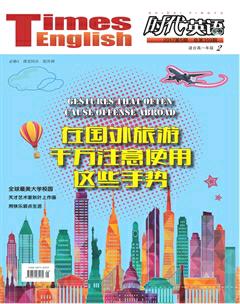跟踪导练(三)
閱读理解
A
Some people think they have an answer to the troubles of traffic jams and air pollution in large cities. Their answer is the bicycle, or bike.
In a great many cities, hundreds of people ride bicycles to work every day. In New York city, some bike riders have even formed a group called Bike for a Better City. They claim that if more people rode bicycles to work, there would be fewer automobiles in the downtown section of the city and therefore less dirty air from car engines.
For several years this group has been trying to get the city government to help bike riders. For example, they want the city to draw special lanes for bicycles only on some of the main streets, because when bike riders must use the same lanes as cars, there may be accidents. Bike for a Better City feels that if there were special lanes, more people would use bikes.
But no bicycle lanes have been drawn yet. Not everyone thinks it is a good idea. Taxi drivers say it will slow traffic. Some store owners on the main streets say that if there is less traffic, they will have less business. And most people live too far from downtown to travel by bike.
The city government has not yet decided what to do. It wants to keep everyone happy. Only on weekends, Central Park, the largest open place in New York, is closed to cars, and the roads may be used by bicycles only. But Bike for a Better City says that is not enough and keeps fighting to get bicycle lanes downtown.
1. Who most prefer the idea of special bicycle lanes?
A. Some bike riders.
B. Some store owners.
C. The city government.
D. People living far from downtown.
2. Why have no bicycle lanes been drawn yet?
A. The main streets are not wide enough.
B. The city government is too busy to do it.
C. Some people dont think it is a good idea.
D. Most people live too far to travel by bike.
3. Central Park is closed to cars and the roads may be used by bicycles only ___ .
A. on Saturdays and Sundays
B. in the afternoons
C. on weekdays
D. in holidays
4. What is Bike for a Better City?
A. A party. B. A company.
C. A person. D. An organization.
B
Think of London and you will probably remember the bright red double-decker buses. Think of Thailands capital city, Bangkok, and the noisy tuk-tuks may come to mind. Think of San Francisco and you might see the citys cable cars.
Imagining what these cities would look like without those is difficult. They are symbols of these cities that make them different. However, these city symbols are not always so well loved by their city leaders. City leaders want what is best for their city, which often means the most modern transport.
In Bangkok, city leaders have banned tuk-tuks because they consider them noisy and polluting. However, the ban has largely been unsuccessful as it has not changed Thai peoples love for the cheap tuk-tuks over taxis.
In London the citys first ever mayor (市長) removed the red double-decker buses, which he thought were old fashioned. His plan worked, but Londoners were unhappy to lose the nice old buses they believed represented the best of their city. They made their unhappiness felt when the mayor came up for reelection. Most Londoners voted for his competitor, who promised to bring the bus back.
As for San Francisco, several cable cars are still in use but mainly as tourist attractions. They are too slow to be used for anything other than scenic trips.
City transport symbols may have a place in their city peoples hearts, but it seems they are increasingly out of step with the modern world. As Londoners have proved, their continued life depends on peoples willingness to fight for their survival.
5. Whats the main purpose of Paragraph 1?
A. To explain why some cities are popular.
B. To introduce some city transport symbols.
C. To attract more tourists to visit some cities.
D. To talk about modern transport in some cities.
6. Why is the London double-decker bus returning?
A. The new mayor loves it.
B. It is popular with tourists.
C. It is an improved transport.
D. Londoners is fighting for it.
7. Which proves the old city transport symbols are not loved by city leaders?
A. The new mayor will bring back double-decker buses.
B. Only a few cable cars are still in use in San Francisco.
C. Bangkok city leaders tried to remove the cheap tuk-tuks.
D. The mayor who sold double-decker buses lost the reelection.
8. What can we learn from the passage about the old city transport symbols?
A. Tourist cities will lose their attraction without them.
B. Modern cities should remove them.
C. They face the problem of survival.
D. The writer thinks highly of them.

